Take the time to honor and support your friends and colleagues, be sure to add the division award winners’ talks to your calendar, they are scheduled in various symposia throughout the week.
Division Awards
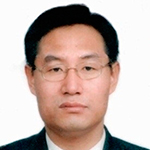 Battery Division Technology Award
Battery Division Technology Award
Thursday, Oct. 5 | 1400h
Maryland C
Progress in High-Capacity Gradient Layered Li[NixCoyMnz]O2 Cathodes for Lithium-ion Batteries
By Yang-Kook Sun
Yang-Kook Sun is presently Professor of Energy Engineering at the Hanyang University in Seoul, South Korea. He received his PhD in chemical engineering at the Seoul National University in 1992. He was group leader at Samsung Advanced Institute of Technology and contributed to the commercialization of the lithium polymer battery. His major research interests are design, synthesis, and structural analysis of advanced energy storage, and conversion materials for application in electrochemical devices, lithium-ion, lithium-sulfur, lithium-air, and sodium-ion batteries.
One of his major achievements is the discovery of a new concept of layered concentration gradient NCM cathode materials for lithium-ion batteries. Sun has several international collaborations around the world. He is the author of more than 474 publications in peer-reviewed scientific journals and 341 registered and applied patents.
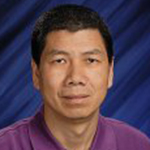 Battery Division Technology Award
Battery Division Technology Award
Wednesday, Oct. 4 | 1510h
Maryland A
Jun Liu is currently a Battelle Fellow at the Pacific Northwest National Laboratory (PNNL), and the director for the Innovation Center for Battery 500 Consortium, a multi-institute program to develop next generation lithium batteries supported by the U.S. Department of Energy. In the past, he has served as the division director of the Energy Processes and Materials Division and fellow at PNNL, the science lead for the Joint Center for Energy Storage, thrust lead for the Integrated Center for Nanotechnologies, senior scientist at Lucent Bell Laboratories, Sandia National Laboratories, and PNNL. Liu is an elected member of Washington Academy of Science, a Materials Research Society fellow, and an American Association for the Advancement of Science fellow.
Liu is recognized in both fundamental research and technology development. He has more than 350 peer-reviewed publications, an h-factor of 90 (Web of Science), and his research received over 40,000 citations over the years. Liu is among the top one percent highest cited researchers by Thomson Reuters in chemistry, materials science, and engineering. He has been named PNNL Inventor of the Year, and Battelle Distinguished Inventor.
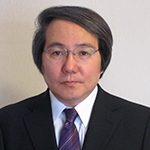 Battery Division Research Award
Battery Division Research Award
Tuesday, Oct. 3 | 1000h
Maryland D
Developments of New Ionic Conductors and Their Application to All-Solid-State Batteries
By Ryoji Kanno
Ryoji Kanno is a professor at Tokyo Institute of Technology’s School of Materials and Chemical Technology. He received his PhD in science from Osaka University in 1985. Since 1980, Kanno has been investigating materials for electrochemical energy conversion devices, particularly lithium battery and solid oxide fuel cells. His research focuses on the development of new materials and finding superionic conducting materials for lithium battery electrodes, electrolytes for all-solid-state batteries, and solid oxide fuel cells. He has developed new outstanding materials such as LGPS, which exceeds the conductivity values of liquid electrolytes. He showed that the all-solid-state battery is a promising category of electrochemical energy storage devices for the next generation.
Kanno has received various honors from the Chemical Society of Japan, The Electrochemical Society of Japan, Japan Society of Powder and Powder Metallurgy, The American Ceramic Society, and Kato Foundation for Promotion of Science. He is presently Associate Dean of the School of Materials and Chemical Technology at the Tokyo Institute of Technology.
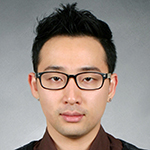 Battery Division Postdoctoral Associate Research Award Sponsored by MTI Corporation and the Jiang Family Foundation
Battery Division Postdoctoral Associate Research Award Sponsored by MTI Corporation and the Jiang Family Foundation
Tuesday, Oct. 3 | 1200h
Maryland D
K-Ion Battery for a Next-Generation Energy Storage System
By Haegyeom Kim
Haegyeom Kim received his BS degree (2009) from the Department of Materials Science and Engineering in Hanyang University, his MS degree (2011) on graphene-based hybrid electrodes for lithium rechargeable batteries at graduate school of EEWS from the Korea Advanced Institute of Science and Technology, and his PhD degree (2015) on graphite derivatives for Li and Na rechargeable batteries at Seoul National University.
Currently, he is a postdoctoral researcher at the Lawrence Berkeley National Laboratory. His current research interest lies in the development of novel electrode materials for Li, Na, and K ion batteries as well as the investigation of underlying energy storage mechanisms. His accomplishments have been recognized by the ECS Energy Technology Division Graduate Student Award sponsored by Bio-Logic, ECS Korea Section Student Award, Best Graduate Thesis Award of Seoul National University, and Global PhD Fellowship from the Korean Government.
 Battery Division Postdoctoral Associate Research Award Sponsored by MTI Corporation and the Jiang Family Foundation
Battery Division Postdoctoral Associate Research Award Sponsored by MTI Corporation and the Jiang Family Foundation
Tuesday, Oct. 3 | 1040h
Maryland D
The Solvation Structure of Active Cations in Next-Generation Battery Electrolytes
By Kimberly See
Kimberly A. See is an assistant professor of chemistry in the Chemistry and Chemical Engineering Division at California Institute of Technology. She received her BS in chemistry from the Colorado School of Mines in 2009, where she worked with John Turner and Todd Deutsch at the National Renewable Energy Laboratory on photoelectrochemical water splitting. Following a year at the University of Colorado working with Gordana Dukovic on zinc oxide nanoparticle synthesis and a year in industry at NuSil Technology working on high refractive index silicones, See went to the University of California, Santa Barbara for her PhD. She worked with Ram Seshadri and Galen Stucky on next-generation batteries and received her PhD in 2014.
Kim was then awarded the St. Elmo Brady Future Faculty Postdoctoral Fellowship at the University of Illinois at Urbana-Champaign and worked with Andrew Gewirth in the Department of Chemistry until the fall of 2017. Her postdoctoral work focused on the solvation structure of active cations in electrolyte solutions in Li-S and Mg batteries. See is interested in understanding and manipulating the fundamental processes that control the electrochemical performance of energy storage materials.
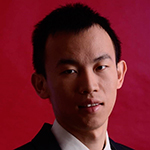 Battery Division Student Research Award
Battery Division Student Research Award
Tuesday, Oct. 3 | 0900h
Maryland D
A Guide to Ethylene Carbonate-Free Electrolyte Making for Li-ion Cells
By Lin Ma
Lin Ma’s academic career has revolved around the research of lithium-ion batteries. He began his scientific career under the supervision of Dr. Yong Yang at Xiamen University in China, where he obtained his BA (2012) in chemistry. During this time, he had accumulated relevant experience on synthesizing and characterizing typical cathode materials of lithium-ion batteries.
Ma obtained his MSc (2014) at Dalhousie University in Canada. During that time, he focused on characterizing the reactions between charged electrodes and different electrolytes at elevated temperatures using accelerating rate calorimetry. His PhD work is currently focusing on increasing energy density and lowering cost for lithium-ion batteries by developing novel electrolyte systems. This work is supervised under Dr. Jeff Dahn at Dalhousie University and exclusively sponsored by Tesla Motors/Energy. He has published 26 peer-reviewed papers and a co-authored a U.S. patent.
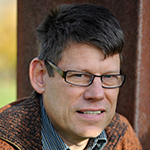 Corrosion Division H. H. Uhlig Award
Corrosion Division H. H. Uhlig Award
Tuesday, Oct. 3 | 1400h
Camelia 2
Advanced Experimental and Modelling Approaches to Understand and Predict Better Corrosion of Metals
By Herman Terryn
Herman Terryn is a full professor at Vrije Universiteit Brussel (VUB) Belgium and a part-time professor at TU-Delft in the Netherlands. He is head of the Department of Chemistry and Materials at VUB. He is chairman of the board of research council faculty of engineering at VUB and president of a research group focused on materials and surface science.
Throughout his career, Terryn has published over 400 papers and has an h-index of 38. His research interests include surface treatments, surface analysis, interfaces, local electrochemistry, corrosion, and protection. Among his honors and awards, Terryn has received the Eu-Award Europeans Federation of Corrosion (2014), Belgian Chair Francqui UAntwerpen: Durability of Materials (2016), and Honorary Professor University of Science and Technology (2017).
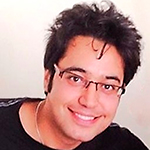 Corrosion Division Morris Cohen
Corrosion Division Morris Cohen
Graduate Student Award
Tuesday, Oct. 3 | 1430h
Camelia 2
Novel Insights into the Corrosion of Magnesium Alloys
By Mohsen Esmaily
Mohsen Esmaily is currently a postdoctoral research fellow at Chalmers University of Technology’s Department of Chemistry and Chemical Engineering in Sweden. He earned a BS degree in materials science in 2009 and an MS degree in advanced engineering materials from the University of Manchester in 2011. He received his PhD degree in materials science and engineering from Chalmers University of Technology in 2016. Esmaily has been working on the corrosion of light alloys including magnesium, aluminum alloys and some selected composites, with a particular interest in corrosion control of cast magnesium alloys through controlling of the solidification process.
Esmaily’s achievements in the field of atmospheric corrosion have been recognized and rewarded by the Royal Swedish Academy of Engineering Sciences, and the Wallenberg Foundation. In 2017, Mohsen co-authored a comprehensive review that summarized decades of Mg corrosion research. He is an active member of The Electrochemical Society, The Minerals, Metals & Materials Society, and Materials Research Society.
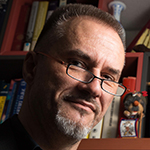 Electrodeposition Division Research Award
Electrodeposition Division Research Award
Wednesday, Oct. 4 | 1400h
Chesapeake H
Metal Deposition Assisted by UPD Monolayers-Fundamentals and Applications
By Stanko Brankovic
Stanko R. Brankovic obtained a BE in chemical and biochemical engineering in 1994 from University of Belgrade and a PhD in science and engineering of materials in 1999 from Arizona State University (Tempe). Before joining the Electrical and Computer Engineering Department at University of Houston in 2005, he spent two years as postdoctoral research associate at Brookhaven National Laboratory (1999-2001) and four years as a research staff member at Seagate Research Center in Pittsburgh (2001-2005).
Brankovic currently serves as a board member of the Electrocatalysis journal and he is the vice chair of the ECS Electrodeposition Division. His research interests span in different areas of material and surface science including thin films, corrosion, electrocatalysis, electrodeposition, magnetic materials, nanofabrication, and sensors. His work has been acknowledged by the University of Houston Research and Excellence Award (2010) and National Science Foundation Faculty Early Career Development Award (2010).
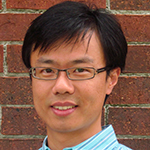 Electrodeposition Division Early Career Investigator Award
Electrodeposition Division Early Career Investigator Award
Wednesday, Oct. 4 | 1440h
Chesapeake H
Magnetocapacitive Carbon Nanocomposites
By Jiahua Zhu
Jiahua Zhu is an assistant professor in the Department of Chemical & Biomolecular Engineering at the University of Akron. Zhu received his PhD in chemical engineering from Lamar University in 2013 and received a MS in the same topic from Nanjing University of Technology (2009).
Zhu’s current research interest covers the fundamental study of multifunctional polymer- and carbon-based nanocomposites and explores their applications in emerging fields such as heat transport, energy storage, catalysis, and environmental remediation. Zhu has co-authored more than 100 peer-reviewed journal articles and three book chapters. His work has been cited more than 4,000 times with h-index of 37. Zhu has actively served on The Minerals, Metals & Materials Society (TMS) and AIChE as symposium organizer and session chair since 2011 and as a reviewer for more than 40 scientific journals. He was awarded the Chinese Government Award for Outstanding Self-Financed Students Abroad, Young Leader Development Award from the Functional Material Division of TMS and Early Career Award from the Polymer Processing Society.
 High Temperature Materials Division J. Bruce Wagner, Jr. Award
High Temperature Materials Division J. Bruce Wagner, Jr. Award
Wednesday, Oct. 4 | 1340h
National Harbor 7
Disorder and Transport in Pyrochlore Oxides
By Cortney Kreller
Cortney Kreller is a staff scientist in the Materials Physics and Applications Division at Los Alamos National Laboratory. She earned a BS in chemical engineering from the University of Maryland, Baltimore County, and MS and PhD in chemical engineering from the University of Washington. Under the guidance of Stuart Adler, her graduate research focused on the measurement and modeling of nonlinear rate processes governing the performance of solid oxide fuel cell cathodes. Following her PhD, she did postdoc work at Imperial College London and Los Alamos National Laboratory.
Kreller’s research interests include electrochemical sensors, electrosynthesis of fuels, intermediate temperature fuel cells, and the interplay of crystalline disorder and ionic transport. She has co-organized several symposia at ECS conferences and is a member-at-large of the ECS High Temperature Materials Division.
Section Awards
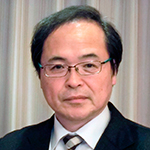 Europe Section Heinz Gerischer Award
Europe Section Heinz Gerischer Award
Tuesday, Oct. 3 | 1715h
National Harbor 6
TiO2-Based Visible Light Photocatalysts Based on Interfacial Charge Transfer Process
By Kazuhito Hashimoto
Kazuhito Hashimoto is currently the president of the National Institute for Materials Science in Tsukuba. He is also a professor at the Policy Alternatives Research Institute, University of Tokyo (UT). After he received his BS and MS degrees in chemistry from UT, he obtained a research position at the Institute for Molecular Science in 1980. Hashimoto obtained his ScD from UT in 1985. He joined the faculty at UT in 1991, where he went on to start a research laboratory in 1997.
His research interests are widely spread in very broad area including photocatalysis, microbial electron transfer, functionalized magnetic materials, artificial photosynthesis, and polymer photovoltaics. His contributions to science are described in more than 650 peer-reviewed papers. Hashimoto received many awards, including the Japan Prime Minister Award for Academia-Industry Corporation in 2004, the Imperial Award for Invention in 2006, and The Chemical Society of Japan Award in 2012. Now he is contributing to science policy making of Japan’s government as an executive member of Council for Science, Technology & Innovation (Cabinet Office of Japan Government). He is also a member of Science Council of Japan.





